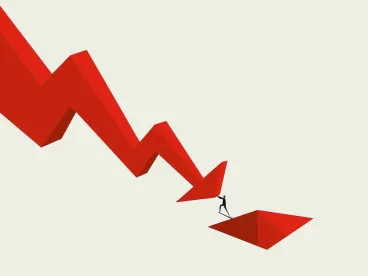Bankruptcy law has seen many changes in 2020 and 2021. Some of these were enacted in response to COVID, but many other changes were included in the Bankruptcy Code before the pandemic. This article highlights some of these changes and their impact on the rights of lenders, trade creditors, suppliers, landlords, tenants, and debtors.
The Small Business Reorganization Act ("SBRA"), effective February 19, 2020, was adopted to help "small business debtors" with debts of no more than $2,725,625 (along with other criteria and requirements). The CARES Act temporarily increased the debt limit to $7,500,000. While this limit was to expire on March 27, 2021, last week, on March 27, 2021, the COVID-19 Bankruptcy Relief Act of 2021 was signed into law, keeping the SBRA eligibility debt limit at $7,500,000 until March 27, 2022. Other bankruptcy-related provisions of the CARES Act were also extended for another year, such as excluding coronavirus-related payments from income for purposes of chapters 7 and 13 and allowing some chapter 13 debtors to modify their plans if they are experiencing material financial hardship related to coronavirus.
The Consolidated Appropriations Act, 2021 ("CAA"), enacted at the end of last year, contained additional bankruptcy law changes. After filing a petition, debtors are required to perform their obligations under unexpired nonresidential leases, typically by paying post-petition rent. A bankruptcy court can give a debtor extra time, up to 60 days from commencement of the bankruptcy case, to pay rent due for the first 60 days following the petition date. Under the CAA, SBRA debtors can ask for up to 60 additional days to pay if they are experiencing hardships related to the COVID pandemic. Further, the time limit for tenants to decide whether to assume or reject a nonresidential lease has been increased to 210 days, from 120 days. These provisions will expire on December 27, 2022.
To encourage landlords and their tenants and suppliers and their customers to work with each other to ease COVID-related financial strains, the CAA enacted a temporary provision affecting preference claims. Typically, if a debtor repays old debts or materially alters its payment patterns (especially in response to creditor pressure), and then files for bankruptcy protection within 90 days, the debtor's estate can sue to recover those payments as "preferences." To mitigate this risk, Congress defined two new terms: "covered payment of rental arrearages" and "covered payment of supplier arrearages." To qualify, the payments must be made in connection with an agreement or arrangement entered into on or after March 13, 2020. For leases, the agreement must defer "rent or other periodic charges under a lease of nonresidential real property." For customers of suppliers, the agreement must defer "amounts due under an executory contract for goods or services." The agreement cannot include fees, penalties, or interest that exceed amounts that would have been due or paid under the original lease or contract. However, if an agreement and its corresponding payments qualify as "covered payment of rental arrearages" or "covered payment of supplier arrearages," the payments are immunized from recovery as preferences in the event the tenant or supplier subsequently files for bankruptcy protection. This removes a significant uncertainty from landlords or suppliers who are considering aiding their financially ailing customers.
Bankruptcy and other laws are in a state of flux as the United States attempts to help individuals and businesses deal with financial and other stresses of COVID.






 />i
/>i

